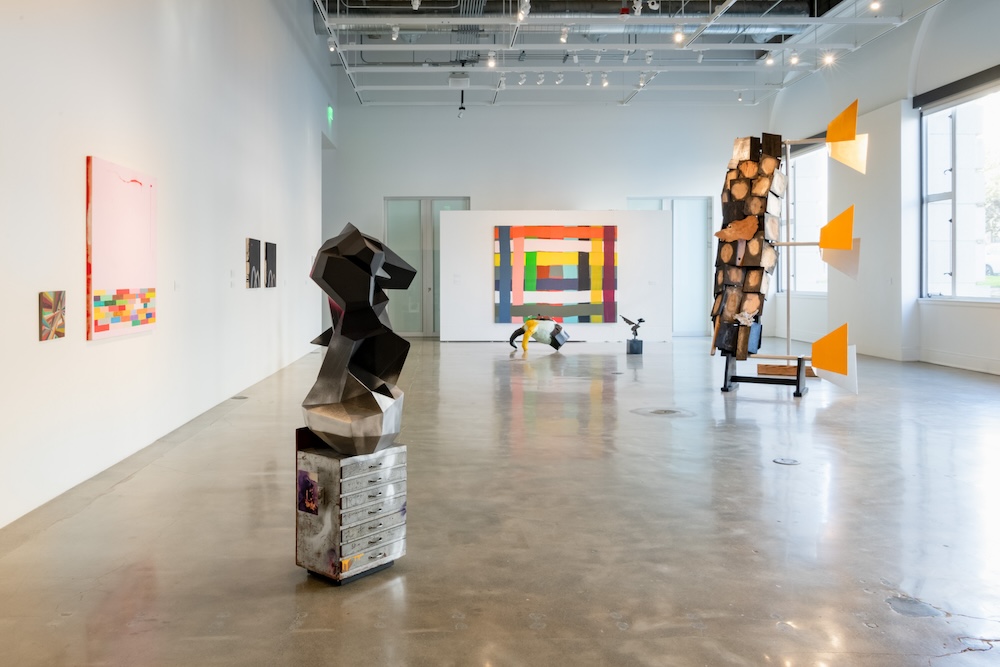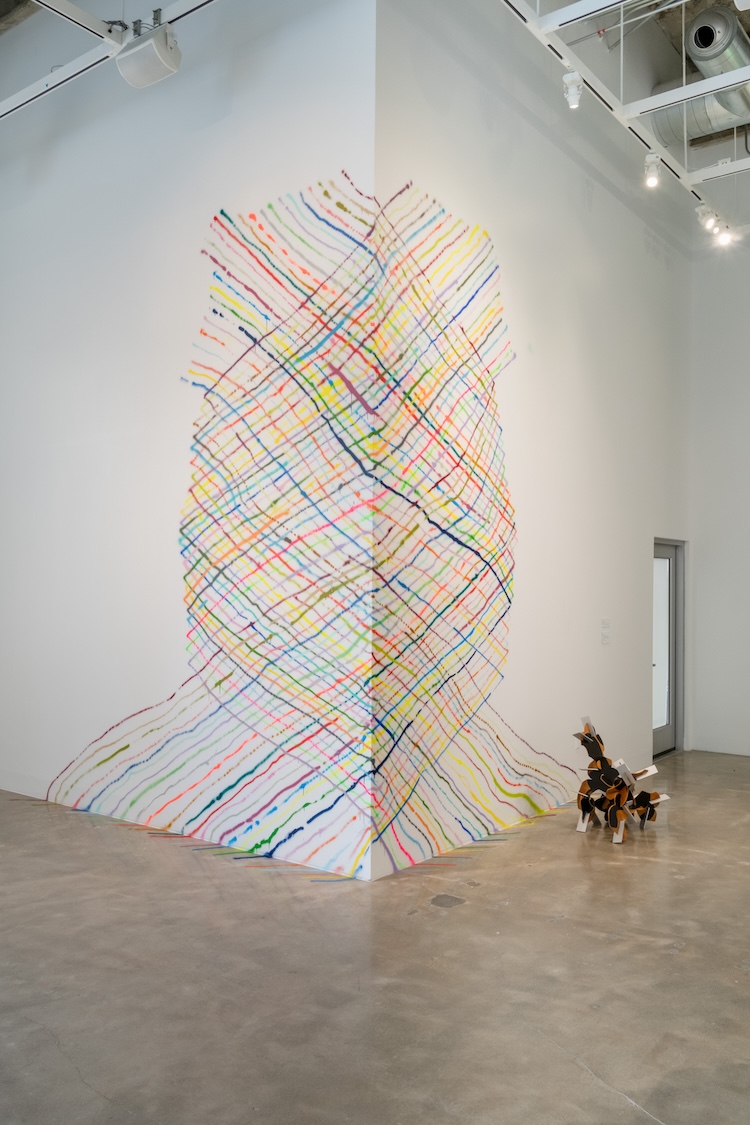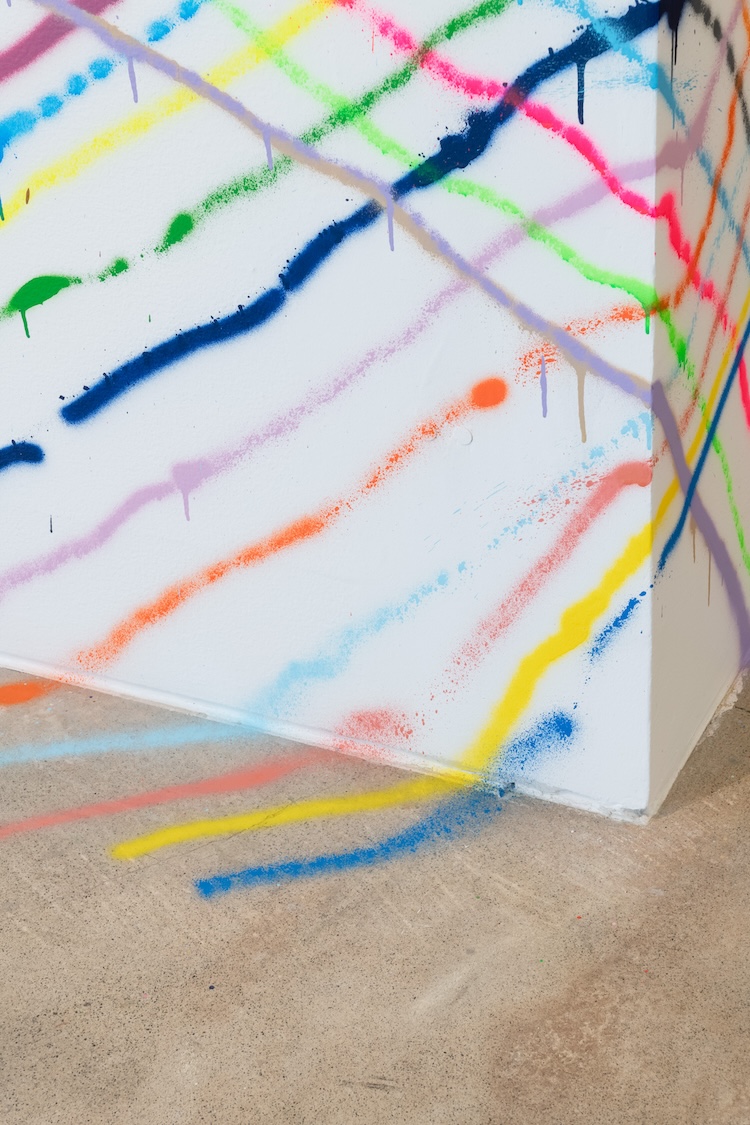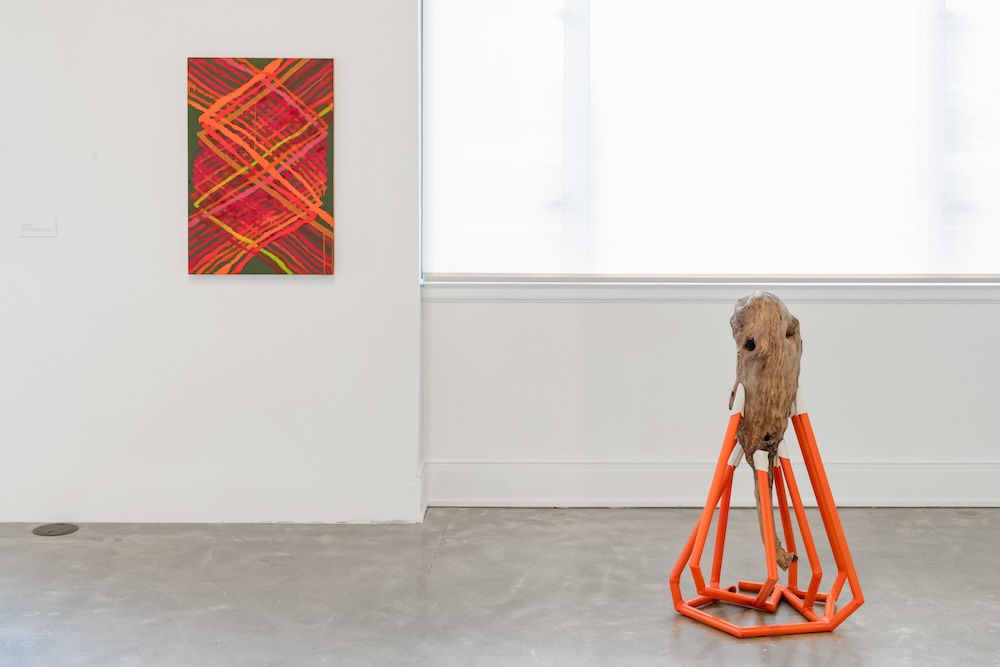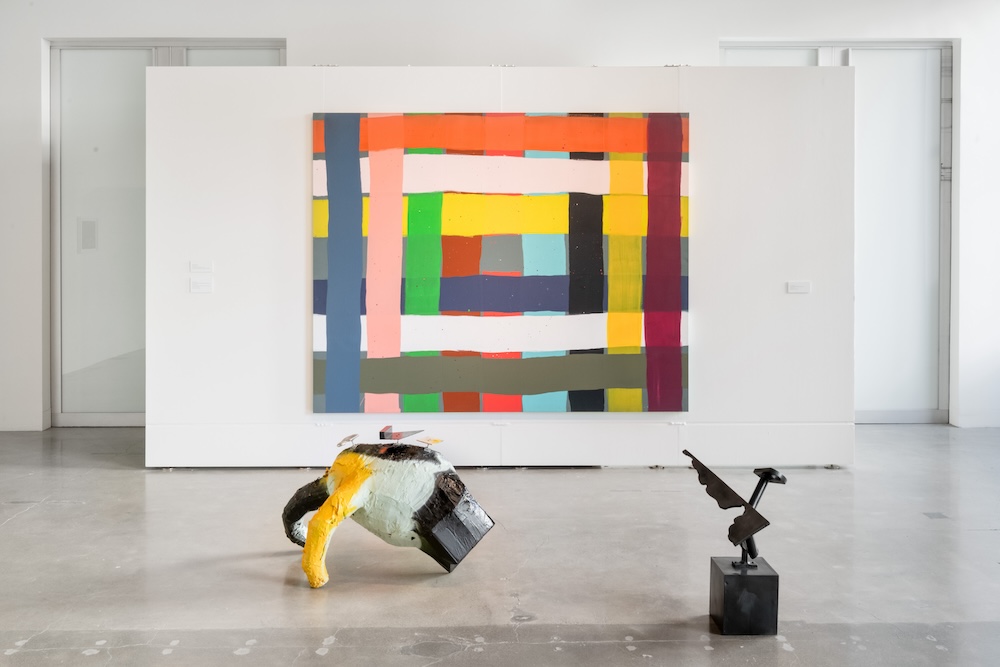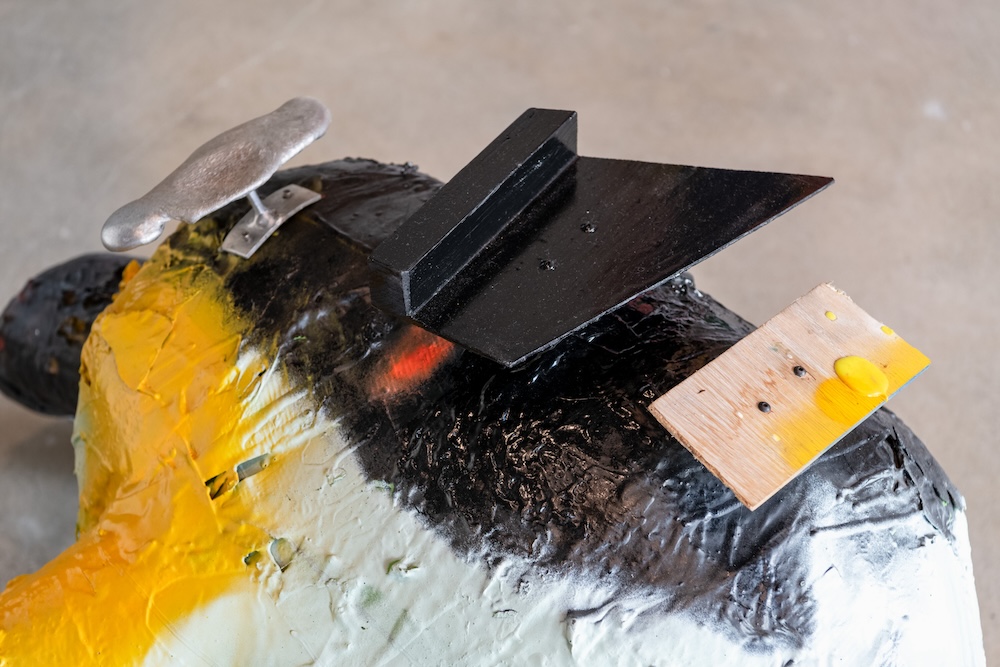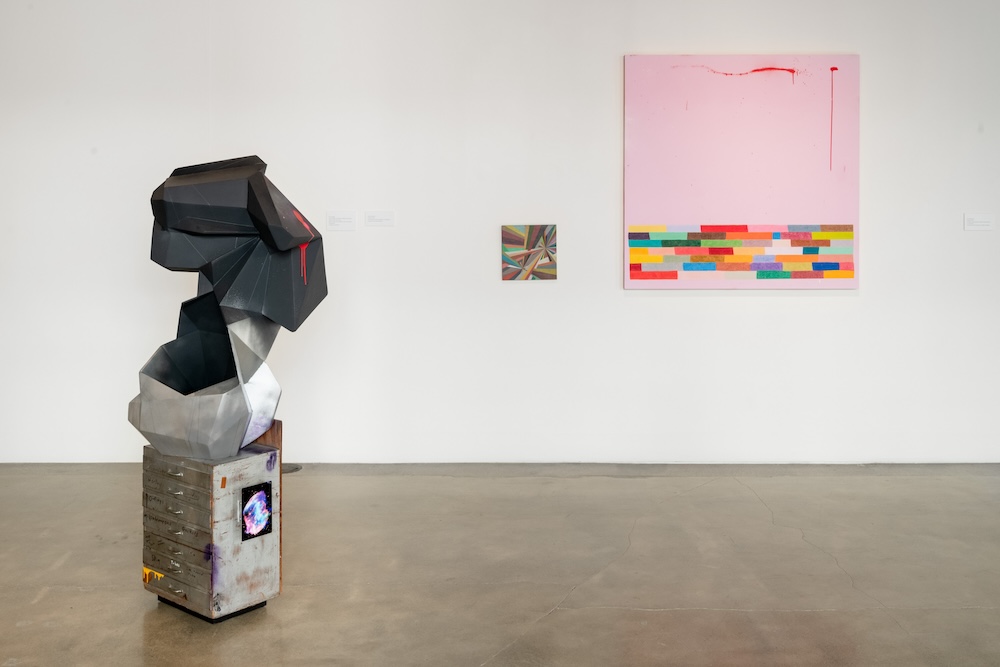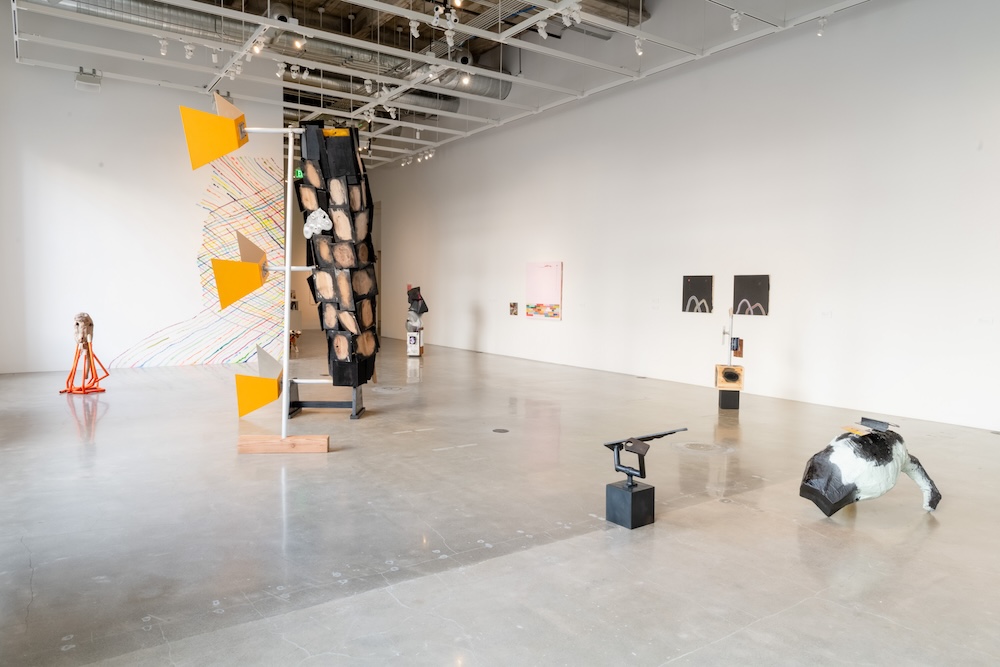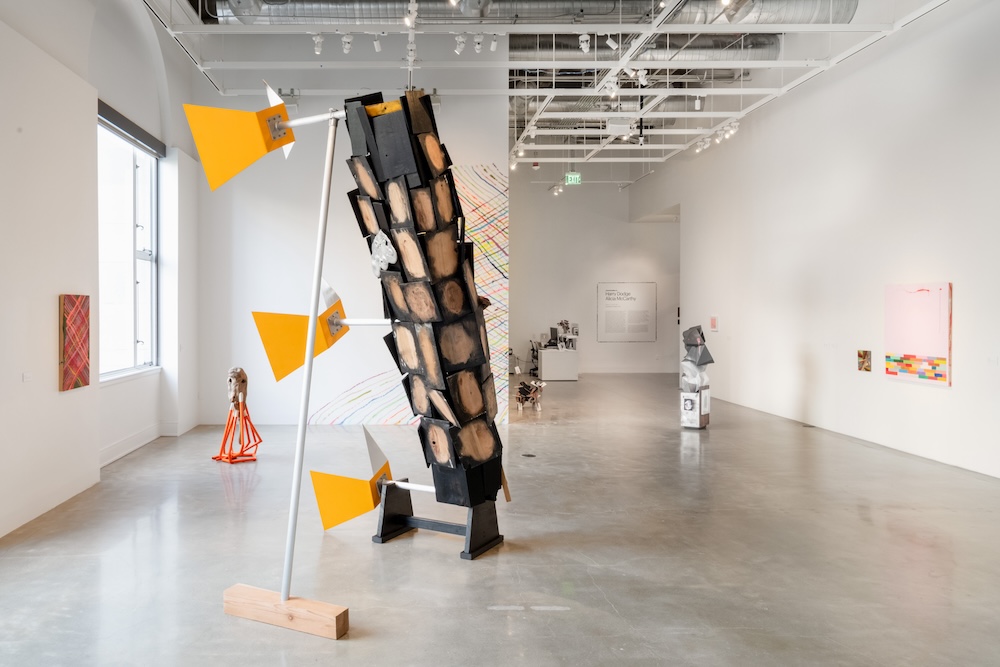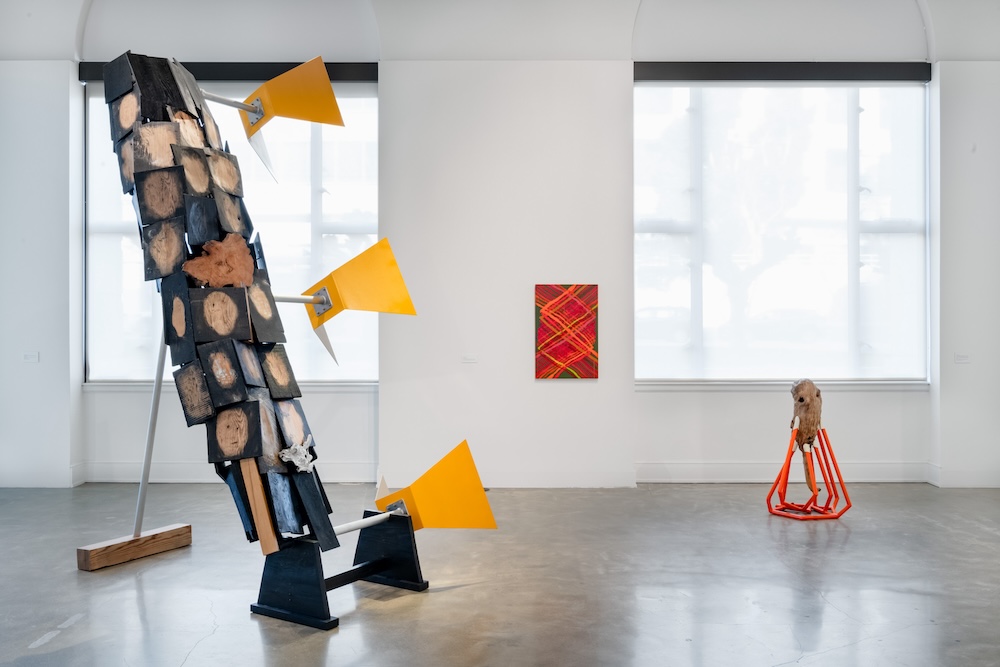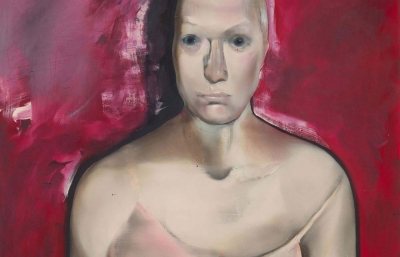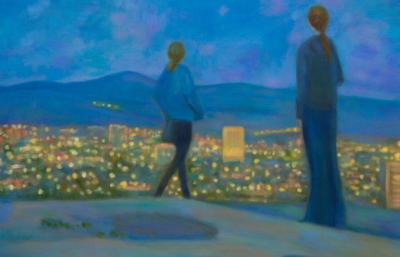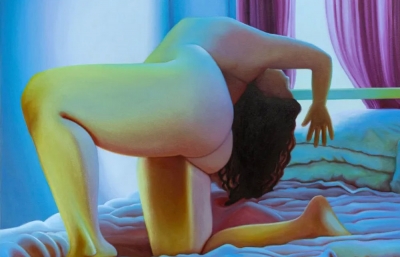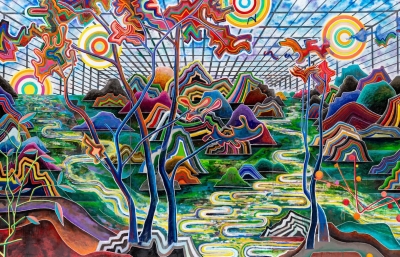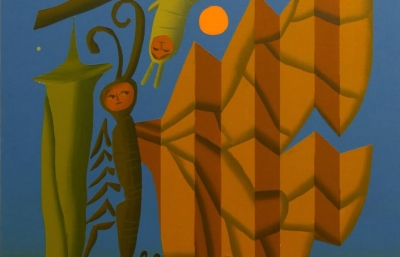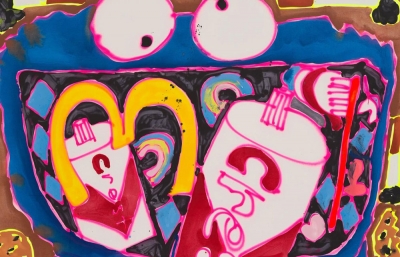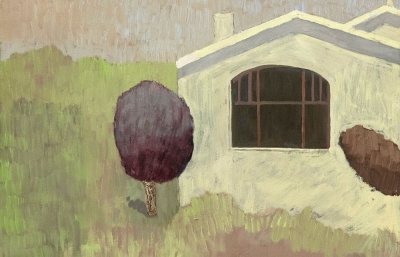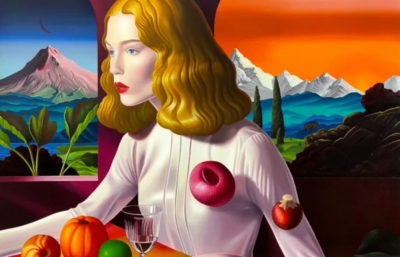You probably don’t need any excuse to hang out in a magnificent Beaux-Arts building from 1932, but if you need one more, it’s this: Alicia McCarthy and Harry Dodge, in dialogue at the War Memorial Veterans Building, across the street from City Hall in San Francisco. The Conversation series, launched by the San Francisco Arts Commission in 2005, pairs two artists across disciplines and geographical divides to show together. These pairings can be the bread-and-butter of a slide lecture in art history, but it always depends on the freshness of each ingredient. This, curated by Nancy Lim, has flavor.
McCarthy and Dodge go way back, and a lot can happen between two artists over decades: ideas and approaches can change, opinions shift, people age. Reunions with old friends can be cozy or cold. Both came out of intensely collaborative scenes, and this conversation looks more like a dance. Hell, I’ll say it: this feels like a spirited rapport between two periods of art history, not late 90’s and now, but Quattrocento and Baroque. Maybe it’s the building they’re in, but McCarthy’s gently undulating chromatic weft and warp uses Piero’s colors. And generally, a rigid matrix can be redolent of Renaissance art. Her grids remind me of the paving stones of a Tuscan city on a hillside, a theatrical citta ideale backdrop to Dodge’s dancers. This is modern molding in color, aerated by negative space and harmonious tones. Celestial flecks of paint dazzle.
Dodge is the Bernini to McCarthy’s Mantegna. His sculptures must be seen in the round, they twist, they gesticulate while we perambulate, irregularly-shaped objects incandescent with touch, the both of us. In some cases, they even genuflect before their McCarthy neighbors, a playful curatorial gambit. One could be the spawn of the “Dying Gaul” and a Manuel Neri’s Hombre Colorado (1959) infused with a jolt of Mad Max (Fury Road, duh). Renaissance art, with its formula of 3-dimensional space expressed by single-point perspective, is to be looked into. Baroque art commands you to move around it, engaging you in its space. Both modes of seeing, as presented in Conversation 8, hold the viewer in two very different, but not antithetical, perceptual modes. You can get lost in McCarthy’s bands or dance with Dodge’s figures. And if the analogy between the centripetal force of the Renaissance window vs. the centrifugal movement of Baroque art seems like a stretch for two artists born in the sixties, immersion is the point in both. I’d normally caution against the word “cozy” for works with a lot of sharp aluminum pieces and flat planes installed in an austere room with high ceilings in an opulent theater, but there you go. It’s a cozy show, full of prickly bits and soft hits, so now you know. —Theodore Barrow for Juxtapoz Magzine, January 2024
All images courtesy of San Francisco Arts Commission Galleries by Aaron Wojack



